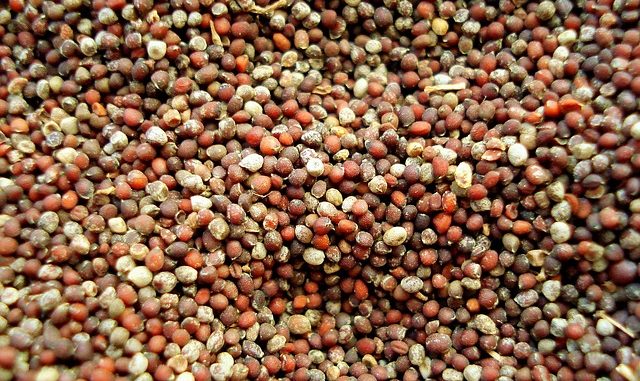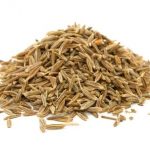
Mustard seeds are essential ingredients in Indian curries especially those from the southern regions of India. They are small round seeds collected from different varieties of mustard plants. We know of at least 40 different species which are used to provide this ingredient but only three are cultivated to any great extent. The seeds provide a creamy texture and have a strong, pungent taste with a spicy, ‘peppery’ flavour. It is felt that black mustard seeds are hotter than the white type.
The seeds are believed to keep evil spirits away from the house if they are scattered around the building. In the UK they are the equivalent of planting a holly bush which prevents witches flying over your house. Visit the Mount Horab Mustard Museum in the state of Wisconsin in the USA as it is dedicated to mustard and has over 5,000 displays of considerable interest.
Types Of Mustard Seeds
Black mustard seeds are as the name implies black. They are extremely pungent, volatile and naturally the most expensive.
Brown Indian mustard are brown seeds which have a nuttier flavour than the black types and with a surprisingly fiery taste.
White mustard produces yellow seeds which are milder in flavour but some preparations can leave many of the compounds which produce a fiery, peppery taste similar to the black seeds.
Use Of Mustard seeds In Cooking
The seed is a classic spice in Indian cooking. It is often added to a dry pan where the spitting popping is a classic sound of a curry in preparation. They are often used for the tadka or for tempering dishes especially ones that require some spiciness in their flavour.
Reputed Health Benefits
The seeds are associated with a variety of health properties. When consumed they are claimed to reduce asthma, various arthritic conditions including rheumatoid arthritis and the management of diabetes. They have also been used to treat migraine and indigestion.

Leave a Reply